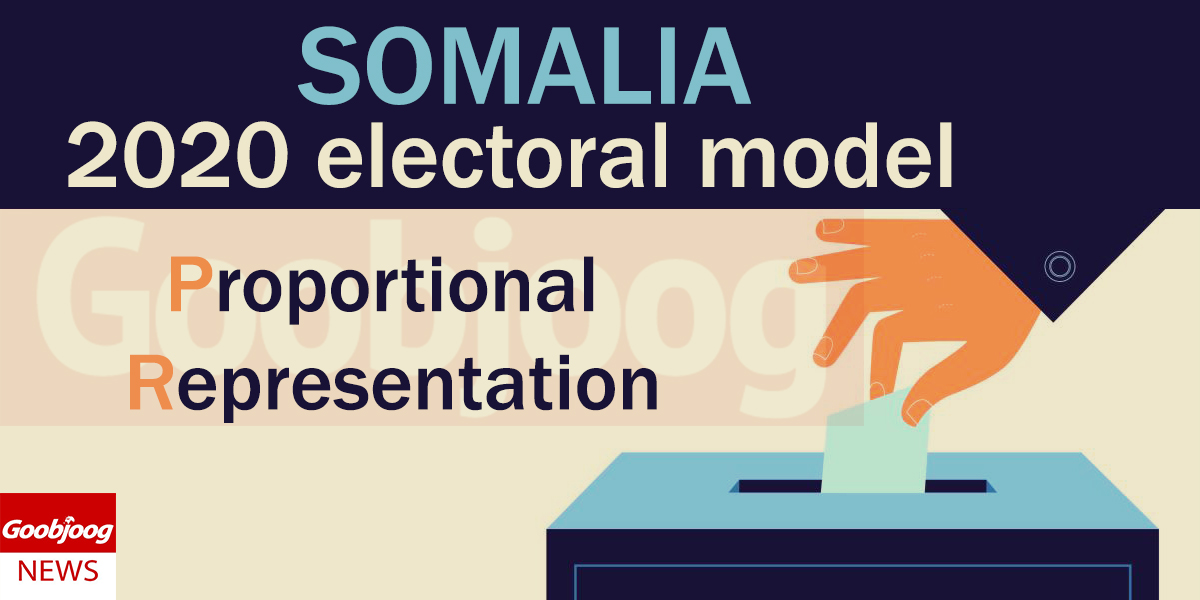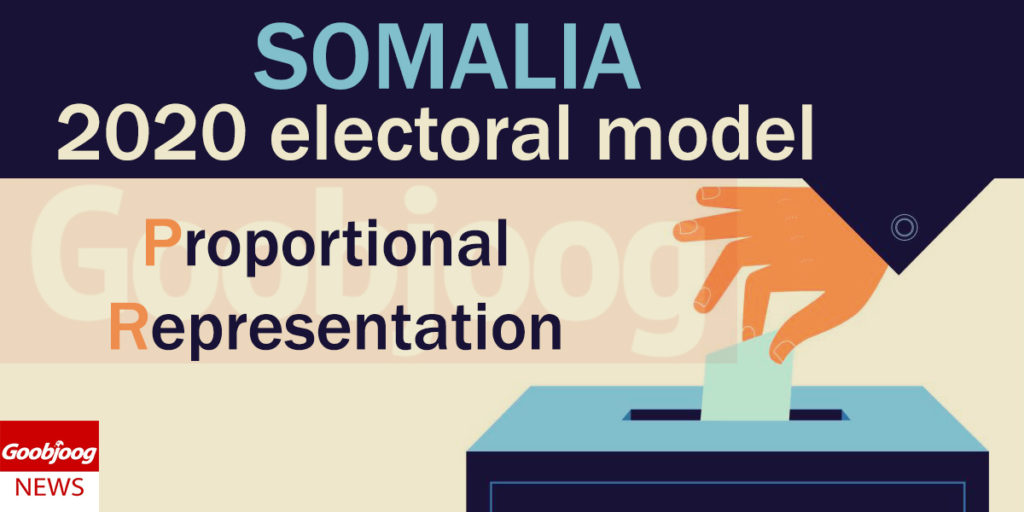Somalia to use proportional representation model in 2020 polls


By Yussuf Osman
Somalia has settled for Proportional Representation electoral model joining countries such as Germany, Sweden, Russia and Italy, Goobjoog News has learnt.
A source at the National Independent Electoral Commission (NIEC) told Goobjoog News the electoral body which is expected to make public its choice in Baidoa this week opted for PR model among six other models.
Unlike popular models such as the First Past the Post (FPTP) which adopts a winner takes all approach as used in countries such as Kenya and most former British spheres of influence, Proportional Representation (PR) works on the idea losing parties/individuals stand a chance for representation. In FPTP) which was also used in Somaliland last year, the candidate with the most votes carries the day and the votes for the losing candidates go to waste.
GENERAL FEATURES
In PR model, political parties gain seats in direct proportion to the number of votes they receive. Unlike other models which deploy single member constituencies in which case one person is elected from each constituency, several people are elected in one constituency in PR system.
Secondly, the seats are divided in the constituencies according to the proportion of votes received by the various parties or groups running candidates. This means therefore that votes cast is translated into seats won avoiding ‘the more destabilizing and ‘unfair’ results thrown up by plurality/majority electoral systems.
It is worth noting however that the PR system is diverse and range from complex mathematical systems as the case in Germany to simple party list systems where voters only vote for parties which in turn will determine based on the percentage of votes received which candidates it will send to parliament.
The electorate can also vote in candidates and parties at the same time. Thus if the candidates of a party win 40% of the vote in a 10 member constituency, they receive four of the ten seats — or 40% of the seats. If another party wins 20% of the vote, they get two seats, and so on.
POST CONFLICT COUNTRIES
The model has also been seen as effective in countries facing deep societal differences as each group or individuals get a chance to be heard through their vote. The choice of this model could be informed by the need to deviate from the clan based politics that have defined Somalia’s political process and need to move away from the 4.5 clan system which has been termed discriminatory.
It means therefore small parties or independents get a fair chance to compete and even secure a win through coalitions as is the case in Italy where major parties are forced to go into a coalition with smaller parties to form government.
The PR model has however been seen as promoting parties with extremist views to come to power through coalitions and hold major parties ransom in coalition negotiations. Democratizing countries are often fearful that PR will allow personality-based and ethnic-cleavage parties to proliferate in their undeveloped party systems.
Under the PR system, voters may have slim chances of throwing out some parties from power since some of these parties will likely be in coalitions despite their electoral performance. Germany’s Free Democratic Party (FDP) is an example. The party became a member of governing coalition for all but eight of the 50 years from 1949 to 1998, although it never gained more than 12 per cent of the vote.
There are different options under the PR system a country can adopt. The electoral body is expected to provide these details in the upcoming conference in Baidoa.